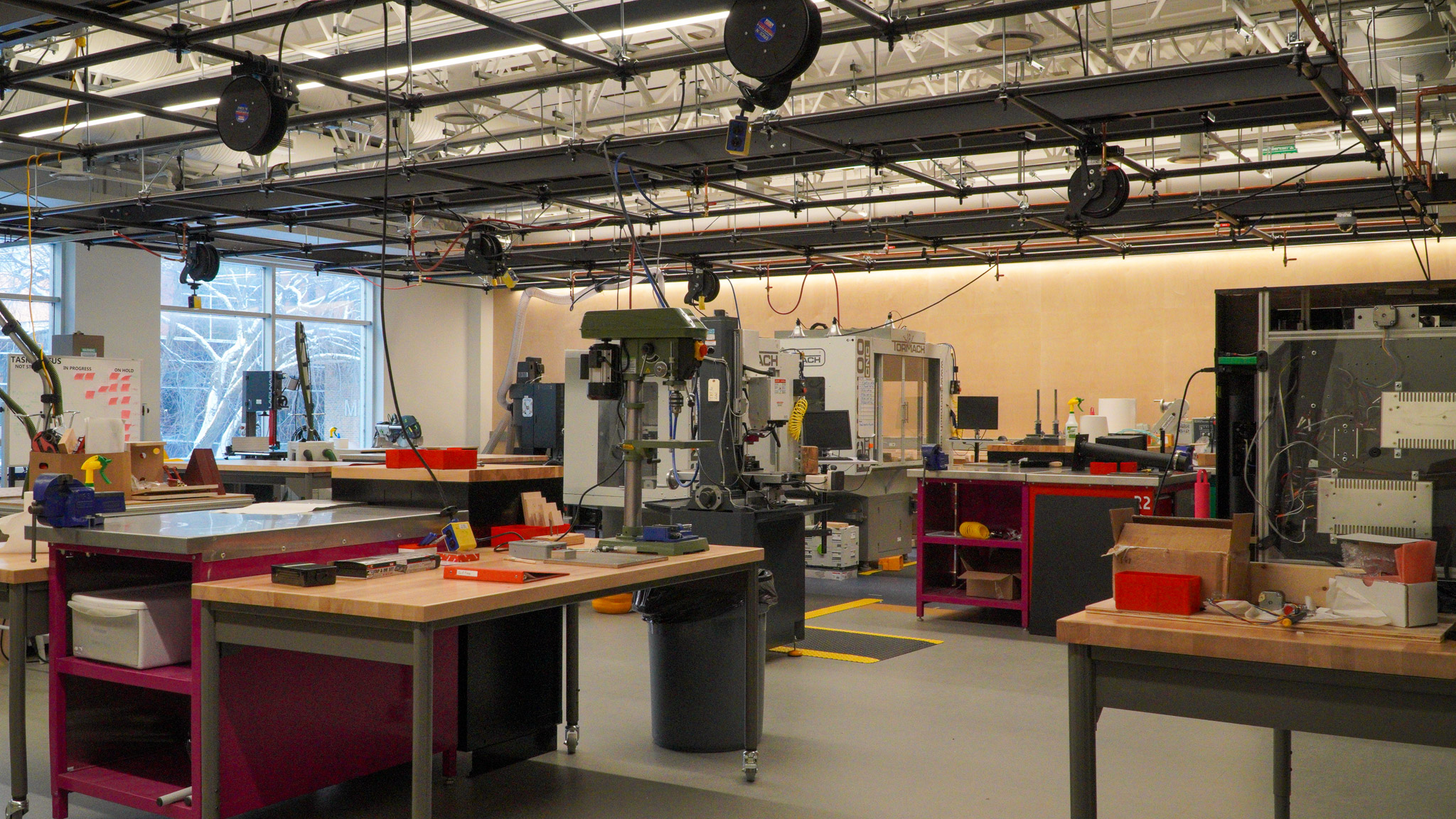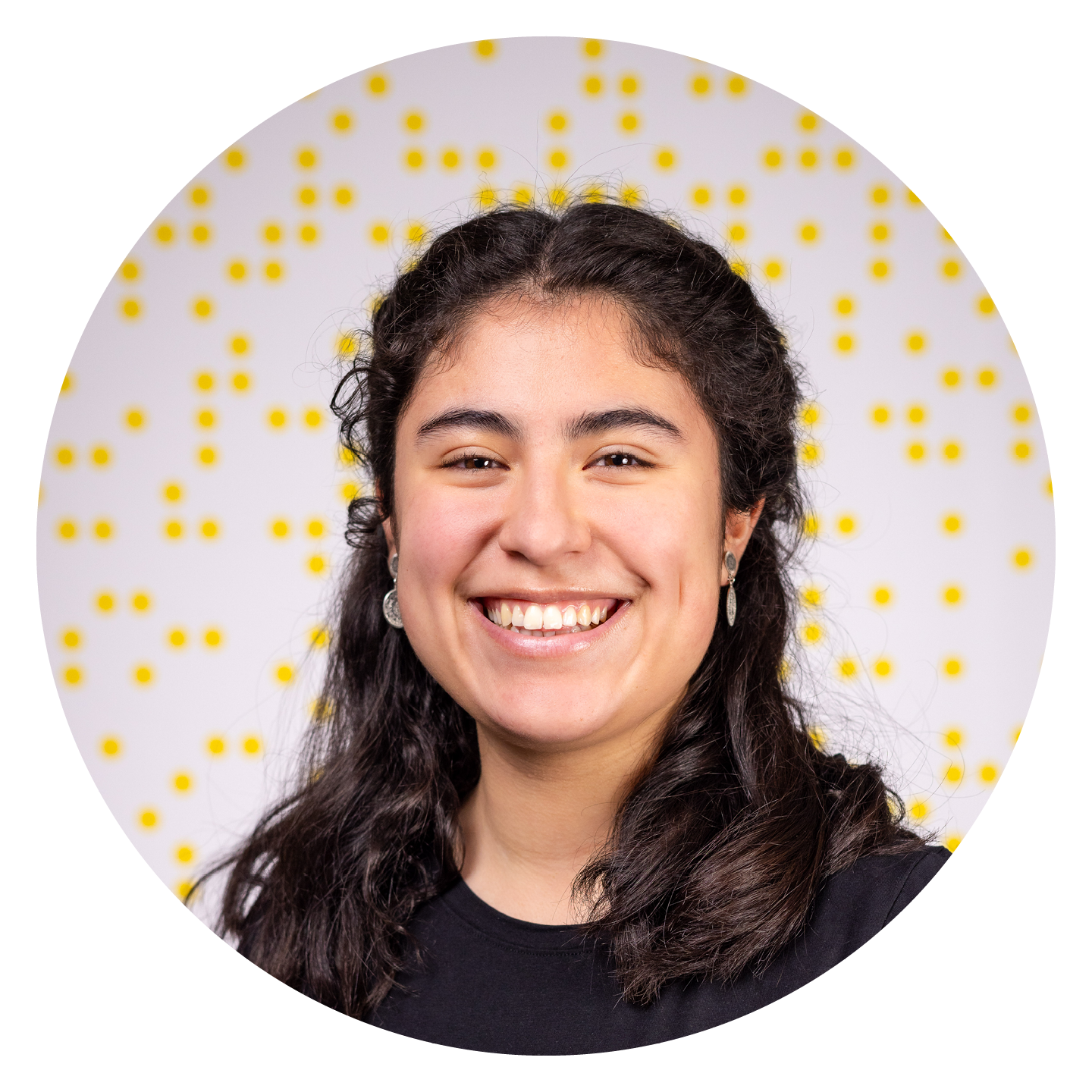The Elko Engineering Garage is an open, hands-on makerspace for community collaboration and physical prototyping. All current U of A undergraduate and graduate students and staff are welcome to use this space for personal projects, extracurricular or student club projects, coursework and research projects. The garage refers to users of the space as “makers.” The demographic of makers who use the garage the most comes from the Faculties of Engineering, Medicine & Dentistry and Arts (industrial design). -
To start using the equipment, you first need to complete the orientation modules, which consist of watching videos and completing quizzes. Before you attend your training sessions, you need to create a training account (LMACS), which helps track the equipment for which you have completed orientation and training. After this, you can get started on registering for equipment-specific training sessions.
There are over 40 pieces of equipment across 9 different categories. Most pieces of equipment take around one hour each to learn, while the more advanced types can take up to 18 hours to learn. After completing training, you are now able to book and use the equipment. You can book the equipment for use during open hours, on slots of 30 minutes for a maximum of four hours. The equipment is free to use. You can purchase approved materials for your projects and pick them up at the garage. For safety purposes, it is necessary to wear long pants and closed-toed shoes, as well as safety glasses.
Garage Makes features many examples of past projects created in the garage. Posts include an explanation of the project’s story, motivations and making process. You can get a photo taken with your project when you complete it. With your permission, this photo can be posted on the Garage Makes website or printed on Polaroid film and placed in the garage in their section of “Garage Makes.”
Over 90 student groups use this space to work collaboratively on their projects. The themes of these groups range across engineering, design, entrepreneurship and social causes. The first category is the engineering student project teams, which includes groups such as the Aerial Robotics Group (UAARG) and the Renewable Energy Design Club. Some of these project teams have participated in Launch Canada, designing a rocket for competition. Similarly, University of Alberta Aero Design participates in the SAE Aero Design international competition. On the other hand, social student groups like the Student Design Association create products in the garage to later sell them to fundraise for charities. Consider getting involved by joining some of these groups; students from all faculties are welcome!
Equipment categories
Crafts section
This includes the button press machine that makers can access on a drop-in basis and requires no training. You can make small and large customized buttons. This is one of my favourite stations in the garage!
It was my first time visiting the space, and I was unfamiliar with the operation of the machinery. At first, I felt intimidated to use the equipment since I had not completed training, and I did not want to break anything. Making some buttons was great because I could create something by myself—and feel like an engineer for a day! This activity helped me feel welcome in the garage and encouraged me to complete training and keep learning about the different equipment to come back later and use the space to build creative things.
There is a crafts supply station that you can access to work on your projects if you need things like scissors and tape. There are also temporary and seasonal stations. This month, there is a decoration station where you can paint small wooden decorations to hang on your Christmas tree! During the holiday season and until the last day of operations this Fall Term, there is a hot chocolate bar for makers to enjoy a drink after they are done working on their projects.
Electronics
This section contains the tools for the development, assembly and testing of circuit boards and electrical projects. This area includes soldering irons, a PCB mill and electronic testing devices like the multimeter, function generator, DC power supply and oscilloscope.
2D fabrication
In this area, there is equipment to engrave and cut 2D profiles in different materials. This includes CO2 laser cutters, a fibre laser cutter and a waterjet cutter.
Textiles
In this part of the garage, you can find machines designated to create and customize clothing, accessories and stickers. There is equipment such as industrial and domestic sewing machines, an embroidery machine, a serger, a vinyl cutter, a heat press and a scaNCut paper cutter. You can use this equipment to personalize some of your shirts and hoodies. I learned to use the heat press to add a design of a yellow dinosaur on a cloth bag.
3D printing
This station contains a self-serve desktop FDM 3D printer. There is the option to print your design yourself for free. Alternatively, for a fee, you can submit-to-print your design to one of the industrial printers, such as the J750 Polyjet, which has a multi-color, multi-material print or the Form 3 SLA (resin) printer. Many past Faculty of Medicine projects have been created with 3D printing equipment. Examples of these projects include the Heart Project and the Baby Rib Cage Trainer.
Metalworking
This section contains equipment for cutting and machining metal stock into high-accuracy parts, such as the cold cut saw, the CNC mills and a manual mill-drill.
Woodworking
The equipment in this area can be used to cut, carve, assemble and finish wood projects. The diverse pieces of equipment include a bandsaw, mitre saw, scroll saw, table saw, a CNC table and hand routers, a domino joiner, nail gun, staple gun, a power planer and thickness planer, wood lathe and drill press.
Plastics
In this station, there are machines to create custom plastic parts, packaging and moulds in equipment, such as the injection moulding machine and the vacuum former.
Finishing area
This section contains tools for painting, sanding and polishing projects. It has power sanders and a vented booth for spray painting, staining, curing and fibreglass or carbon fibre lay-ups.
Working on these different types of equipment is a great opportunity to expand your creativity and develop an idea from scratch. At the garage, rather than learning how to draft or create specific ideas, you learn to use the equipment to build the ideas that you already have. In creating your project, you are able to use multiple materials and work through different equipment.
Visiting the garage is a great opportunity to learn a new skill and become curious about the use and operation of different kinds of equipment. It is a great experience as part of the university to work on a project (even if it is only button-making) before graduating!
Learning about the garage and the equipment allowed me to gain new knowledge and develop new skills that I can use to make a creative product. I felt so accomplished after I saw the product I had designed and created by myself! It is also a fun and rewarding experience to make something yourself as a gift for your loved ones.
The idea of using some of the machines at first felt scary; I did not want to injure myself or damage any equipment. However, these worries went away after I completed the orientation modules because the videos clearly explained the safety measures and community guidelines that allow everyone to learn in this space safely.
As an arts student unfamiliar with the terminology and operations of engineering, visiting the garage at first felt a bit daunting since I thought I would not understand the concepts or I would not be able to operate the equipment appropriately. Initially, I believed that building projects with heavy machinery was something that only engineers could learn to do. By visiting the space, I learned that all makers, regardless of their faculty and program, share the motivation to learn something new and the passion to be creative and build something from scratch that reflects their interests, personality and aspirations.
There is an opportunity for collaboration while working on projects in the garage. There is an encouraging learning atmosphere; when in doubt, you can ask staff about how to operate a machine. You will never feel that you are on your own when navigating this learning and creative experience.
I encourage students from all faculties to check out the space and think about creating something of their own. To get started, the project does not have to be something elaborate. Just like me, you can start by making a fun button!
Are you also interested in exploring the different makerspaces across campus? Check out The Shack: Science Hardware Makerspace, the Digital Scholarship Centre, the 3D Printing at the Cameron Library, and the Augustana Campus 3D Printshop.

